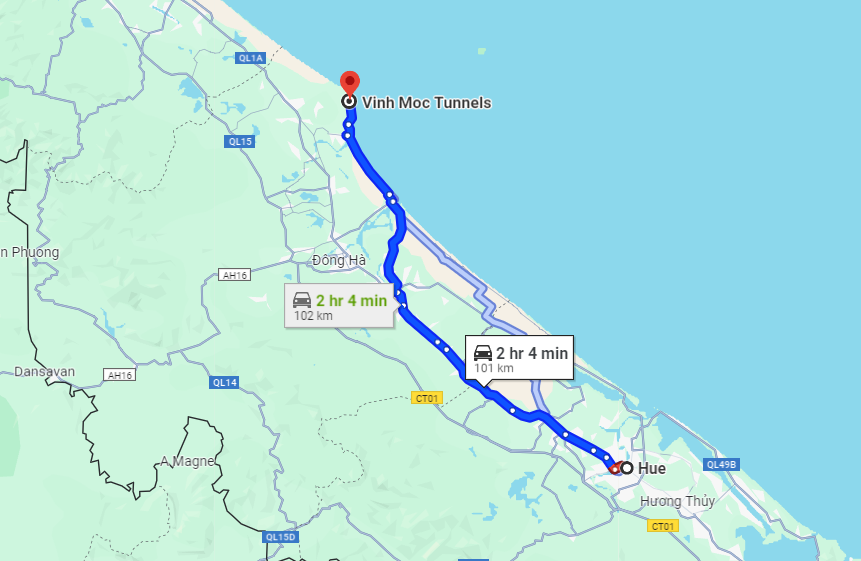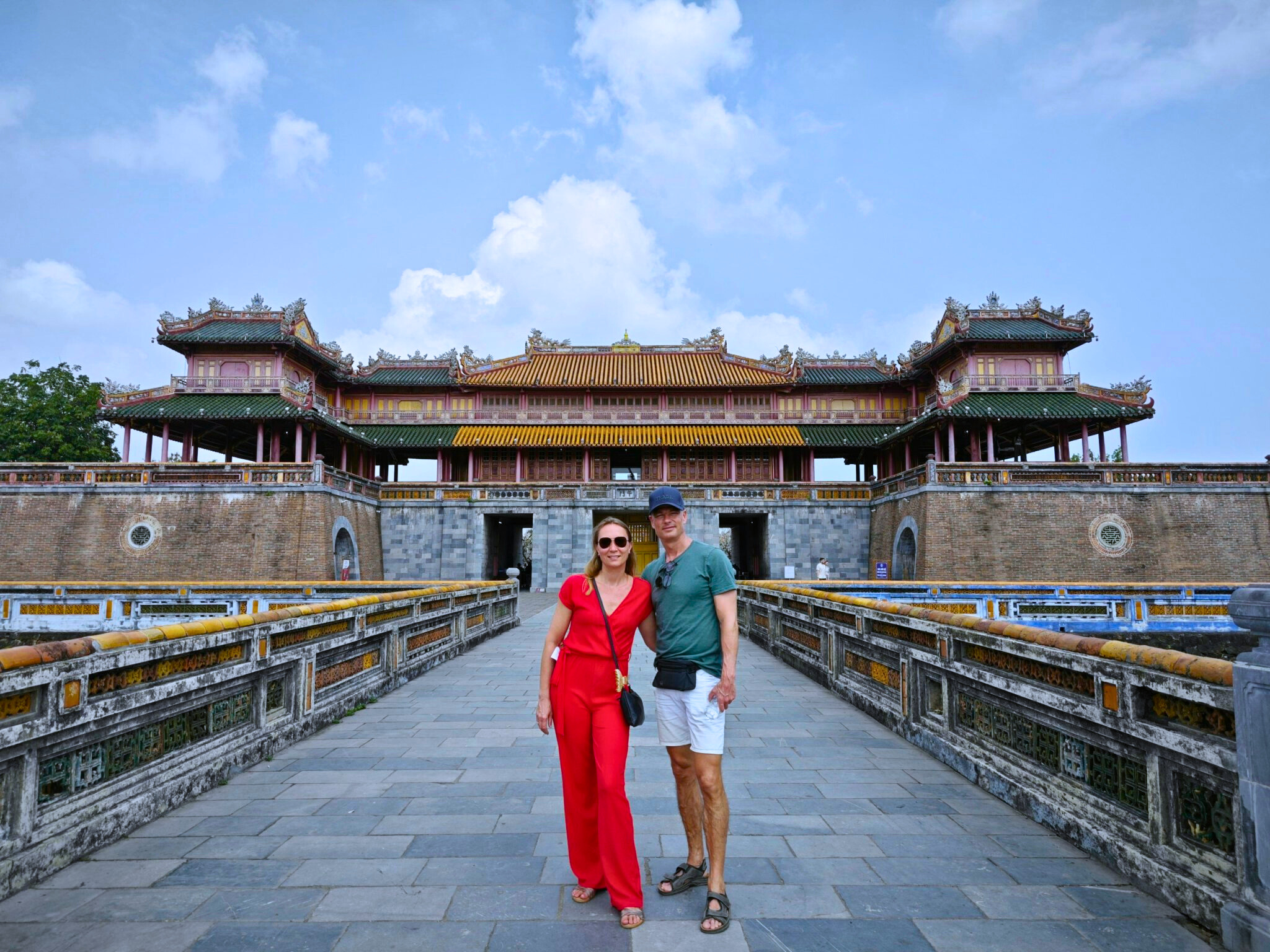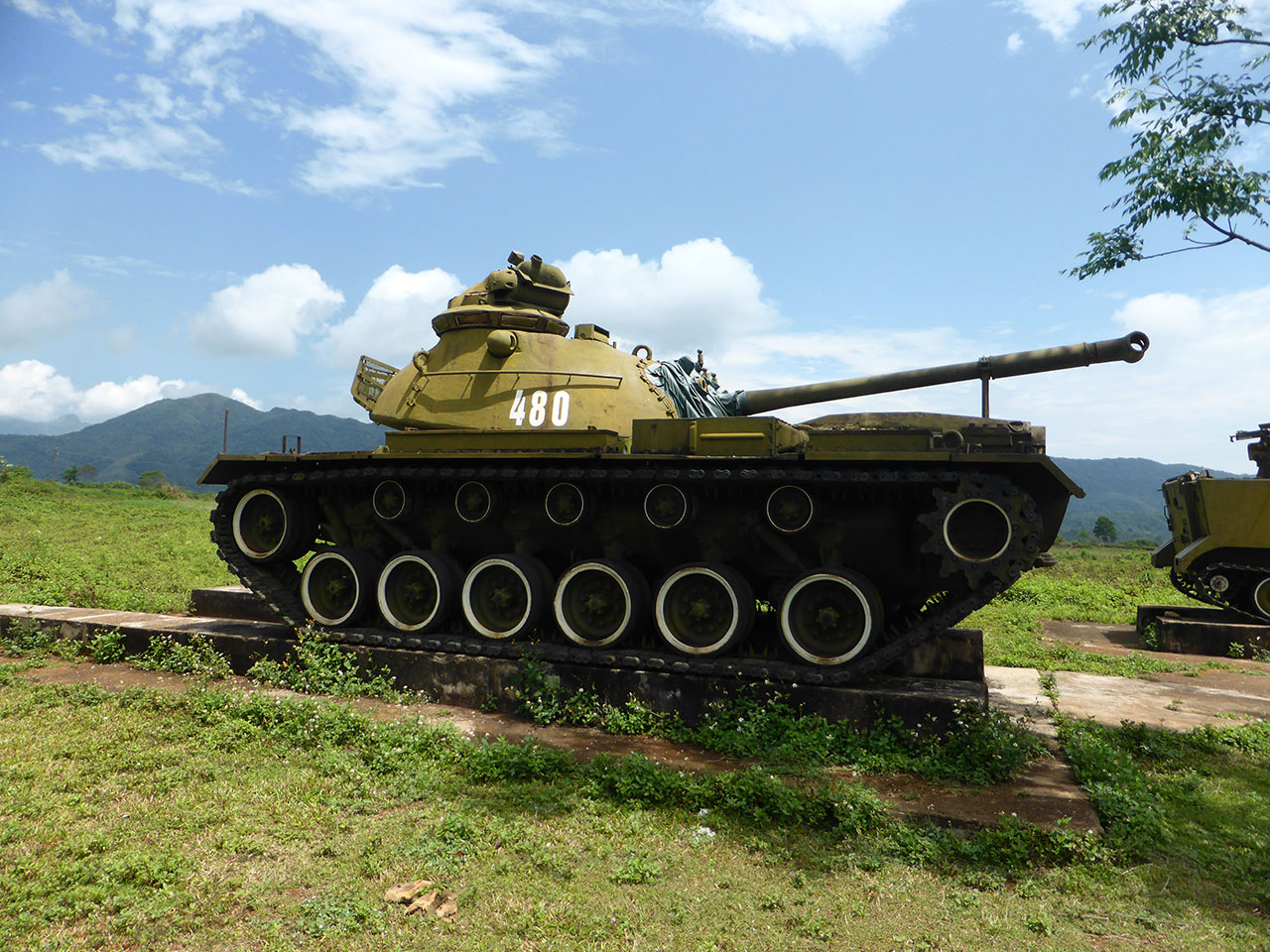1. Introduction
Hien Luong Bridge and Ben Hai River are famous relics at the 17th parallel dividing two regions of Vietnam. These are two “historical witnesses” that witnessed the entire history of the division of the North and South during the Vietnam War. During the war, this place played an essential role in the wars against France and the United States.
Hien Luong Bridge and Ben Hai River witnessed many divisions due to the war. This is a famous place and attractive many people come to visit. In the past, there were many wars before and after the signing of the armistice agreement with France. Many soldiers fought and sacrificed to defend these two places.
2. History of Hien Luong Bridge and Ben Hai River
2.1 Ben Hai River
Ben Hai River is nearly 100km long , less than 200m wide at its widest point, originating from West to East, then emptying into the sea at Cua Tung. Ben Hia is a source of the river, so the name Ben Hai River also originates from this place. Ben Hai River flows about 20km from the sea, then merges with Sa Lung River on the left, then the two rivers merge into one stream flowing into the east sea. This river is not only a natural beauty but also an important geographical feature with historical and cultural significant.
The reason why Ben Hai river is famous because it was the place that divided the North and the South during Vietnam war. The Republic of Vietnam controlled the North. Geographically, the river is located south of the 17th parallel, according to the Geneva According, this was the temporary demilitarized zone in 1954
2.1 Historical Name of Vinh Moc Tunnels
Vinh Moc Tunnels were actually called “Son Vinh Tunnels”, a designed said, who witnessed the construction. “From the beginning, we called them Son Vinh Tunnels. “Son” means mountain and “Vinh” refers not only to the people of Vinh Moc but also to the people of Vinh Linh. The people of Son Trung and Son Ha communes and the border guards also helped to build the tunnels.” They were opened to tourists 10 years after the was ended. The government has made continuous efforts to preserve the tunnels in their original form. By the mid-1960s, the area had become a black wasteland soldiers planned to move the local community underground to protect them form the was and prevent casualties.
2.2 Hien Luong Bridge
From 1928 to 1945
Hien Luong Bridge crosses the Ben Hai River at 735km on National Highway 1A, connecting Vinh Linh and Gio Linh districts of Quang Tri provice.
In 1928, the bridge was built by Vinh Linh district with the support of local people. Hien Luong Bridge was initially a modest stucture. The bridge was 2m wide, made of wood, with iron pillars, just enough for pedestrians to cross.
In 1931, the Indochina Federation repaired the bridge, but motorbikes still had to take a ferry to cross the river. In 1943, the bridge was upgraded. At this time, small motor vehicles could pass, but the bridge was not used fro military purposes.
From 1950 to 1967
In 1950, Hien Luong Bridge was built by the French with reinforced concrete, 162m long, 3.6m wide and a load capacity of 10 tons. In May 1952, the French army rebuilt the new bridge to continue serving the Vietnam War. The bridge has 7 spans, 178m long, reinforced concrete pillars, steel beams and a pine-paved bridge deck. The bridge deck is 4m wide and 1.2m high on both sides.
From 1972 to 1974
From 1972 to 1974, to serve the southern battlefield, the Liberation Army of South Vietnam built a pontoon bridge 20m west of the old bridge. In 1974, the Democratic Republic of Vietnam government rebuilt it with reinforced concrete, 186m long, 9m wide, with a 1.2m wide walkway. This bridge opened the route to the South to support the war and from there successfully reunified the country.

3. What do at Hien Luong Bridge and Ben Hai River have?
3.1 Flagpoles
On each bank of the Ben Hai River, there is a flagpole flying the flag of the corresponding region and below it is a flagpole honoring the victory. The flagpole on the North bank is 38.6m, flying the red flag with a yellow star, the national flag of Vietnam. The flagpole on the South bank is 35m, flying the yellow flag with three res stripes, the old national flag of South Vietnam. The flagpoles were erected in 1962 and 1956 to show the political and ideological differences between two regions. Despite the prolonged flag war between the two government, the red flag with a yellow star still flies proudly.
3.2 Loudspeaker System
A fierce battle for loudspeakers between the North and the South. With 5 loudspeaker clusters distributed along the 1,500-meter length towards the South bank, they brought the voice of the State and the people of the North to the people of the South every day.
However, the South bank government also had large loudspeaker clusters that played very loudly, overwhelming the loudspeakers of the North, broadcasting continuously for 14 to 15 hours a day. A tense and fierce competition occurred, involving content, technology, transmission and political purposes.
3.3 The 17th Parallel Demilitarized Zone
The 17th Parallel Demilitarized Zone was the provisional military boundary between North and South Vietnam established by the Geneva Accords of 1954. the demarcation line ran along the Ben Hai River in Quang Tri province. In 1976, when Vietnam was reunified following the withdrawal of US forces and the surrender of he South Vietnamese government, the demarcation line ceased to exist.
4. How to get to Vinh Moc Tunnels
Vinh Moc Tunnels is an attractive destination for tourists travelling to Vietnam. Besides many other famous historical sites such as Khe Sanh Base, Hien Luong Bridge, Ben Hai River, ect Vinh Moc Tunnels is 110km from Hue city, it also takes about 2 hours to drive from Hue city to Vinh Moc Tunnels by private car or take a taxi.
Vinh Moc Tunnels – an extremely unique underground construction in Quang Tri. It is a historical and cultural relic with great historical and educational value, has become a place to educate the younger generation about the tradition of patriotic living, an interesting, attractive and unique tourist destination for teenagers and visitors.
5. The best way to get to Vinh Moc Tunnels
Vinh Moc Tunnels can be easily reached by car, motorbike or bus from Hue City. The journey takes about 2.5 hours and passes through scenic spots and historical sites. Visitors can also join a guided tour (DMZ Tour), which often includes other attractions in the DMZ area, such as Hien Luong Bridge and Khe Sanh Base.
How to book a Private Car to Vinh Moc Tunnels?
- Da Nang to DMZ by Private Car for about 115 USD per 4-seat car
- Hue to DMZ by Private Car for about 65 USD per 4-seat car
Or you can also book a DMZ tour with an English speaking guide who will help you understand more about the history of the DMZ area.





